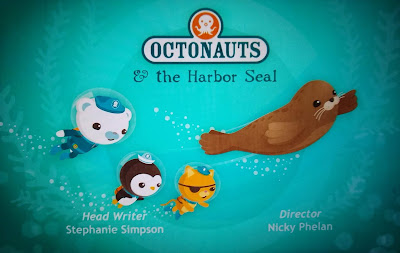Are Manatees Pinnipeds?
Many people think that manatees are a type of pinniped. This sounds reasonable, since both are cute marine mammals shaped somewhat similarly.
Kali'na watches on while her mom eats lettuce, from website Zooborns
However, manatees are actually in a group of animals called "sirenians" which include the West Indian Manatee, African Manatee, Amazonian Manatee, and the Dugong. There are many differences between the sirenians and the pinnipeds.
Relatives
One of the biggest differences between sirenians and pinnipeds are their relatives, as found in the fossil record. Manatees are more closely related to elephants and hyraxes, and like those two animals are herbivores (they primarily eat plants). They are from the clade "Afrotheria" comprised of animals of an African origin. Pinnipeds, on the other hand, are their own clade and are closely related to Carnivores (primarily meat eaters), such as dogs and cats.
Diet and Feeding
West Indian Manatee at the Cincinnati Zoo eating lettuce
Dugongs (found in the southwestern Pacific and Indian Ocean) only eat bottom vegetation, and unlike other sirenians have a "rostral disk" instead of the shorter snout.
Physical Characteristics
Although they both look roundish, sirenians and pinnipeds differ greatly in physical characteristics. One of the largest differences is how they move through the water. Manatees have a large paddle (an oversized "tail" instead of individual "feet") that help them move through the water, and Dugongs have large flukes like cetaceans and dolphins. Pinnipeds, on the other hand, have two distinct rear flippers that they use to swim (they also use their front flippers). Sirenians don't have any natural predators, so they don't have to swim very fast and a paddle will allow them to go slower and be able to stop easily while they graze on water plants and lettuce. They swim by moving their paddle flippers up and down, as opposed to pinnipeds who move their two rear flippers from side to side.
Harbor Seal Rear Flippers (Norwalk CT Aquarium, personal photo)
Habitat
Sirenians and pinnipeds live all around the world. There used to be a very large sirenian known as the "Stellar's Sea Cow" that lived in the arctic, but was hunted to extinction by people. So, while sirenians no longer are in cold waters, there was a species that once lived there. While they may have lived in different climates, there is one important difference about where all of them live. Sirenians spend all of their lives in the water, and do not come out onto land ever. Pinnipeds spend specific seasons on the beach or on rocks (breeding seasons), and spend other seasons in the water.
Due to pinnipeds and sirenians having different family trees, having different diets, different physical characteristics, and spending different amounts of time in the water, sirenians are not pinnipeds. But they are little floaty potatoes of happiness, which is just as good as being a fat loaf of happiness that is a pinniped.









Comments
Post a Comment